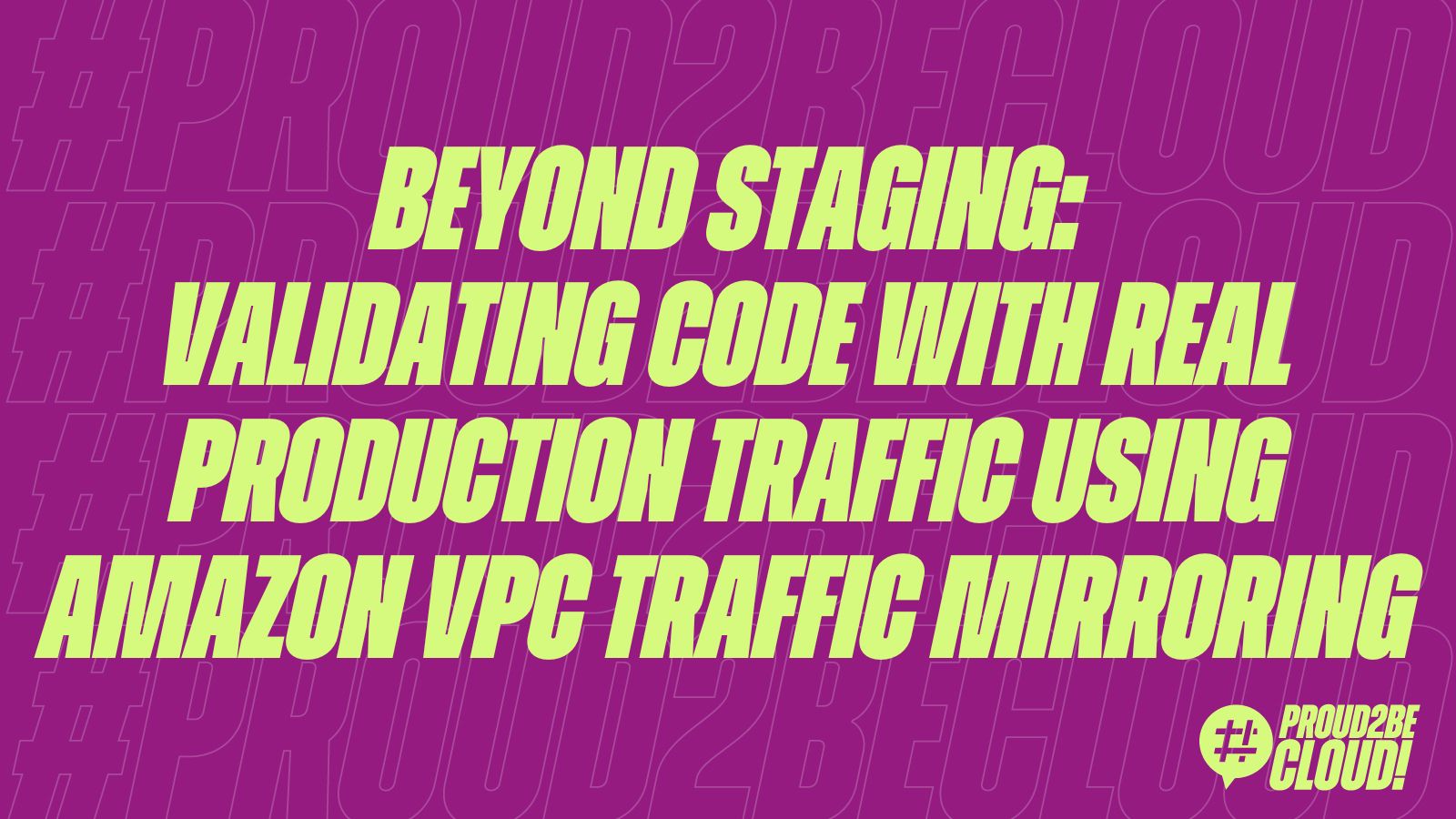AWS data transfer costs in a nutshell
17 December 2025 - 10 min. read
Alessio Gandini
Cloud-native Development Line Manager

We’ve all been there: Unit tests are green, integration tests pass with flying colors, and even the most rigorous synthetic load tests show the new code is ready. Confidence is high. Yet, a persistent question often lingers in the background:
"What will happen with real users? With their messy, unpredictable, I-didn't-even-know-the-API-could-do-that kind of traffic?"

That question was particularly resonant for us. We had just completed a significant refactoring of a critical application, the kind whose slightest hiccup sends ripples across the business.
Our setup is a common AWS pattern: an AWS Application Load Balancer distributes traffic across a fleet of Amazon EC2 instances running our service. The service's main job is to query a MongoDB database and return results.

The concern sparked a caffeine-fueled brainstorming session. "What if," someone proposed, "we could transparently shadow live production traffic and send it to our new code, completely isolated from the actual production environment?"
While ambitious, AWS offers a capability adaptable to this challenge: Amazon VPC Traffic Mirroring.
Here’s the concept: Amazon VPC Traffic Mirroring acts like a one-way mirror for the network. Production traffic flows normally on one side, handling real user requests without interruption. On the other side, an exact copy of that traffic is sent to a designated target, like an AWS Network Load Balancer or a network interface. The critical detail is how it sends this copy. The mirrored packets are encapsulated in VXLAN, a network virtualization protocol that wraps layer-2 Ethernet frames into UDP packets for transport across IP networks. This prevents them from being treated as regular network traffic and interfering with anything. However, it also means our test application can't process these VXLAN packets as standard HTTP requests.
To bridge this gap, we needed an utility to:
With this approach, the production flow remains untouched and unaware, while our test environment receives a real-time, risk-free replica of live traffic. It wasn't a turnkey solution, but with the right tooling for decapsulation, it was a powerful and safe way to validate our new code against reality.
With a clear strategy, we got to work.
First, we built an isolated replica. We provisioned a complete, parallel stack: new Amazon EC2 instances running the refactored code, a dedicated "shadow" AWS Application Load Balancer, and a fresh MongoDB instance seeded with a recent production snapshot. This was our high-fidelity testing ground.
Second, we deployed our mirroring environment. We set up an AWS Network Load Balancer in front of an AWS Auto Scaling group of Amazon EC2 instances. On these instances, we installed a lightweight open-source tool (like this one) to handle the VXLAN decapsulation and forward the traffic to our shadow AWS ALB. This gateway was the bridge between the mirrored world and our test environment.
Third, we identified the traffic source. We identified the network interfaces (ENIs) of our production Amazon EC2 instances as the Mirror Source. This is where the traffic we wanted to copy originated.
We didn't need to mirror all traffic; operational chatter would only add noise and cost. Our service operates on port 8080, so we created a simple Mirror Filter: "Only mirror TCP traffic destined for port 8080." This focused our experiment and, crucially, helped manage costs.

Finally, we created a Mirror Session to connect the source, the filter, and our gateway target. With the configuration complete, we activated the session.

The results were immediate and illuminating. Watching our CloudWatch dashboards, we saw the CPU and Memory metrics for the new test service begin to fluctuate, perfectly mimicking the rhythm of the production environment. Our shadow application was alive, processing a real-time replica of production load.

This is where the true value emerged.
We let the mirror run for a full day, capturing a complete cycle of peak and off-peak traffic. Analyzing the application logs and database metrics revealed two critical insights:
This was the crucial shift: we moved from confident assumptions to concrete proof, validated against real-world chaos, all without ever putting a single user's experience at risk. The subsequent production deployment was the calmest, most confident one we'd ever done.
This technique has become a cornerstone of our strategy for high-stakes deployments. It doesn't replace standard testing, but serves as the ultimate pre-flight check.
Here are our key learnings:
Amazon VPC Traffic Mirroring fundamentally changed how we manage deployment risk. It bridged the daunting gap between our expectations and production reality. We stopped merely hoping our code would perform under pressure, we gained the ability to know it would.
Next time you're facing a critical launch, ask yourself: what if you could see how the system behaves with live traffic, before it goes live?
We'd love to hear from you: how does your team build confidence and de-risk major deployments? Share your strategies in the comments!
Proud2beCloud is a blog by beSharp, an Italian APN Premier Consulting Partner expert in designing, implementing, and managing complex Cloud infrastructures and advanced services on AWS. Before being writers, we are Cloud Experts working daily with AWS services since 2007. We are hungry readers, innovative builders, and gem-seekers. On Proud2beCloud, we regularly share our best AWS pro tips, configuration insights, in-depth news, tips&tricks, how-tos, and many other resources. Take part in the discussion!